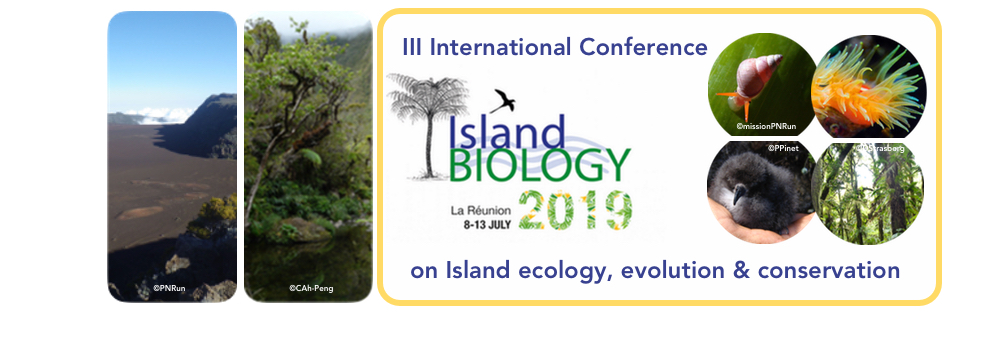Like many other tropical environments, La Réunion island hosts a vast variety of indigenous and endemic species. This is not only due to its geographical isolation in the Indian Ocean, but also because of the rich diversity of natural habitats, and the existence of many micro-climates. The island is of volcanic origin and the landscapes of its eastern part are, until today, continuously transformed by the active Piton de la Fournaise Volcano. Besides frequent volcanic eruptions that produce basaltic lava flows, wildfires also threaten the vegetation along the volcano's flanks. A major wildfire occurred between 20 and 27 January, 2019, in the Grand Brûlé, an area characterized by extremely steep slopes, dense vegetation and seaward ground movement of ~3 cm/yr that is caused by gravitational edifice spreading. The area affected by the fires was estimated to roughly 2000 ha by the Service Départemental d'Incendie et de Secours (SDIS). We used Synthetic Aperture Radar (SAR) imagery collected by the European Sentinel-1 satellite in order to more accurately map the extent of the burn scar by applying two main techniques: a) a change detection technique comparing the backscatter intensity before (2019/01/17) and after (2019/01/29) the wildfires, and b) SAR interferometry, a technique that allows tracking surface changes over time by calculating the difference between the post- minus the pre-event interferometric coherence in order to estimate the areas of vegetation loss. Our results suggest that a minimum of 1500 ha of vegetation were lost during the fires. Ground investigations during and after the event allowed for the identification of two main types of fire dynamics: a) In densely forested areas, mainly the ground vegetation was destroyed, while larger trees survived, producing characteristic discontinuous patterns in satellite imagery, b) Mosses and lichens covering younger lava flows burned entirely, appearing as distinctive continuous patterns in satellite imagery. Our analysis helped mapping and characterizing the total area affected by the January 2019 wildfires along the eastern flank of Piton de la Fournaise Volcano, and demonstrates the applicability of SAR satellite imagery for rapid mapping of burnt scars.

|
|
|
|
Detecting burnt scars from space: A case study of the January 2019 wildfires along the eastern flank of Piton de la Fournaise Volcano, La Réunion
1 : ESPACE-DEV, UMR228 IRD/UM/UR/UG/UA, IRD
-
Website
Institut de Recherche pour le Développement, Université de Perpignan Via Domitia, Université de la Réunion, Université de Montpellier, Université de Guyane, Université des Antilles (Pôle Martinique), Université des Antilles (Pôle Guadeloupe)
IRD - Maison de la Télédétection - 500 rue Jean-François Breton - 34093 Montpellier -
France
2 : Observatoire Volcanologique du Piton de la Fournaise (OVPF)
IPGP, 14 RN3-Km27, 97418, La Plaine des Cafres, La Réunion, France -
Réunion
3 : UMR 228 Espace-Dev, Espace pour le développement
UMR 228 Espace-Dev, Université de La Réunion, Saint-Denis
Université de La réunion -
France
4 : Journal de l'Ile de La Réunion
(JIR)
Saint Denis -
Réunion
5 : Université de la Réunion
(UR)
* : Corresponding author
15, avenue René Cassin - CS92003 -97744 Saint Denis Cedex 9 -
Réunion
|
| Online user: 33 | RSS Feed |

|
 PDF version
PDF version